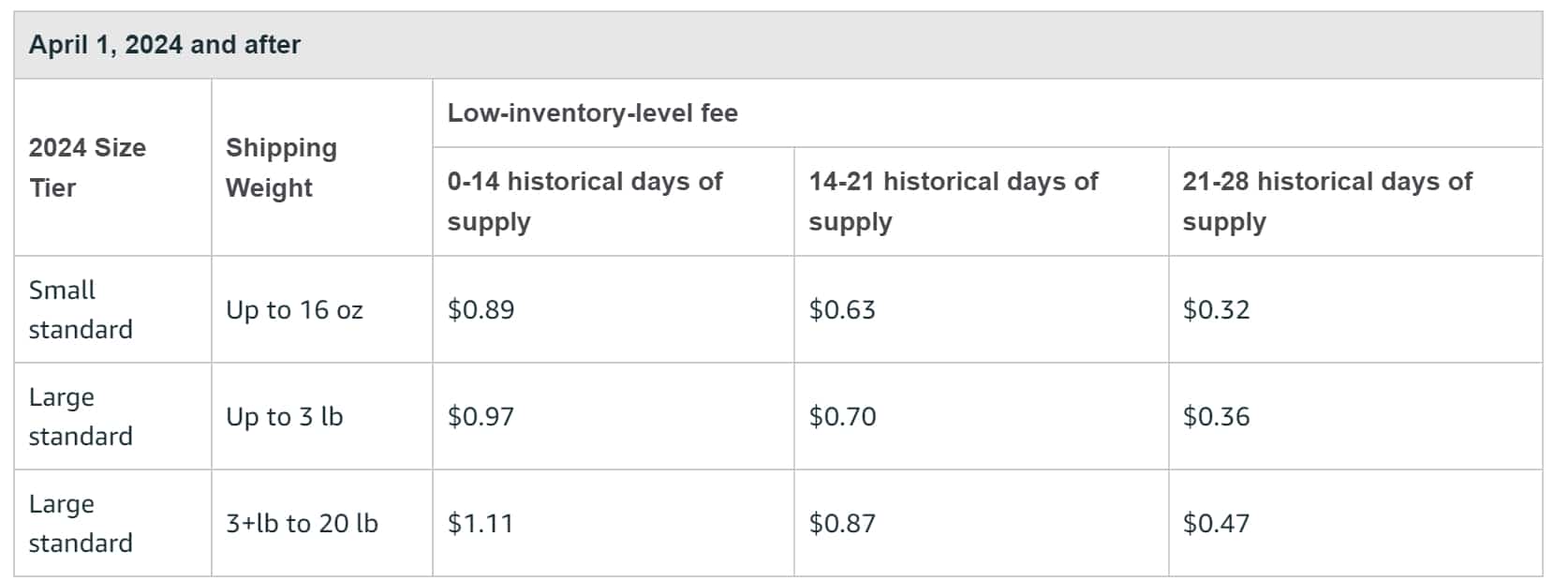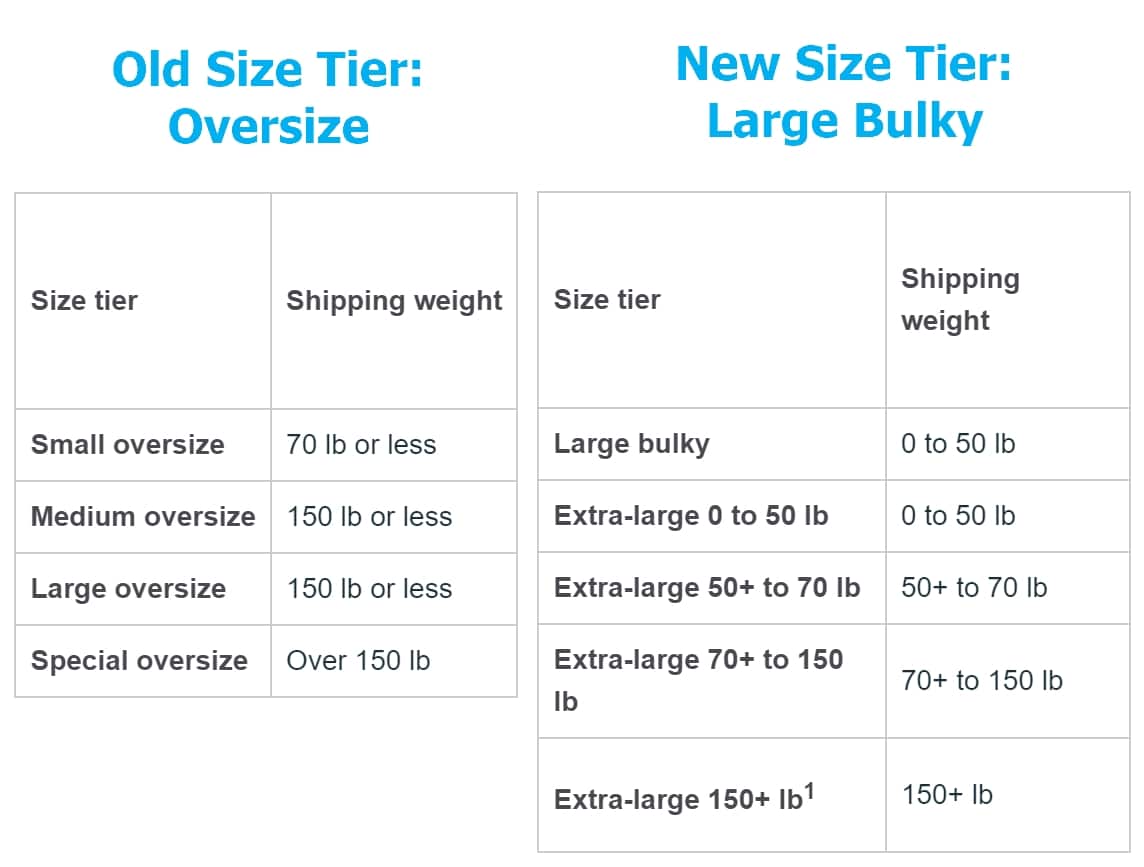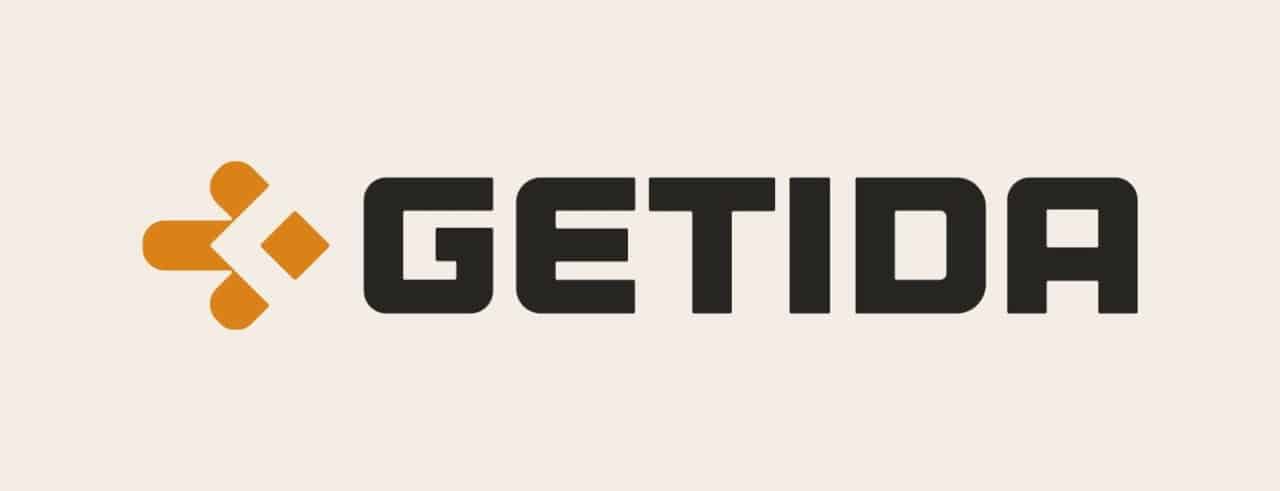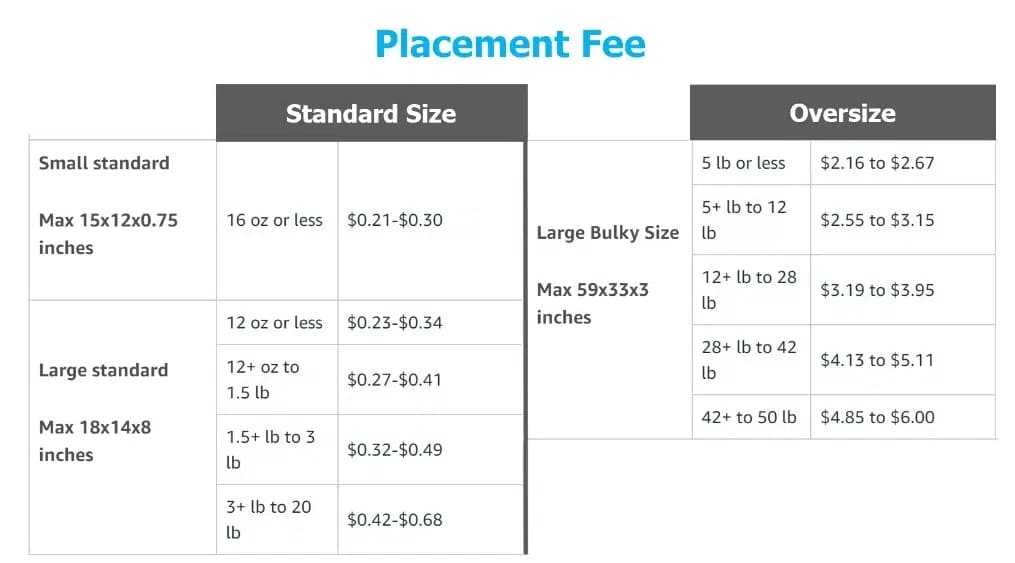Amazon Rolls Out Biggest and Most Complex Fee Increase Ever

Amazon today announced its biggest fee increase ever, and more aggravatingly, the most complex fee increase ever.
I'll try to walk you through exactly what fees are changing and how it affects you. Warning—it's complex (probably deliberately by Amazon) and there's a lot to absorb.
Summary of Changes
| Changes in Fees | Effectivity Date |
|---|---|
| A placement fee will apply for each item shipped in ($0.21-$0.68 for standard-size items and $2.16-$6.00 for oversize items) | March 1, 2024 |
| Amazon is lowering FBA fees for most items, although these fees don't cancel the new placement fees | April 15, 2024 |
| Amazon is charging sellers BIG fees (a minimum of $0.89 extra) for standard-size items that consistently have less than 28 days of inventory | April 1, 2024 |
| Amazon eliminated the “Oversized” category. They've been renamed Large Bulky and Extra-Large. |
Expect some significant changes for Amazon Global Logistics as the Placement fees erode many of the cost advantages of AGL.
Amazon is Now Charging You a Placement (aka Receiving Fee) for Each Item
One of the biggest changes is that Amazon is now charging a placement/receiving fee per item. This is similar to what 3PLs charge. The fees are quite significant. For standard-size items, it's going to range from $0.21 to $0.68, and for oversize, it'll range from $2.16 to $6.00.
These fees only apply when you're shipping to one location (e.g., ONT8) as most sellers do for standard size items. For oversized items, products would typically get split into multiple locations anyway so, in theory, most oversized items shouldn't be subject to more fees. Essentially Amazon is making standard size products be distributed to multiple FCs like oversize products are.
Also, interestingly, Amazon won't charge these placement fees when used with Amazon Global Logistics for Oversize/Large-Bulky size items but will for standard size items (see more on this below).
But Doesn't Inventory Placement Already Exist?
Many people have pointed out that Inventory Placement has existed for many years now where people can pay to have their items delivered to only one FC. However, this has never really been the case for standard size items as they historically have only gone to one FC. Amazon is shifting this policy (and many sellers have already seen this occur over the last several months) as their standard size items are going to multiple FCs. Sellers will now either a) pay for the luxury of shipping standard size items to one FC as they previously did for free, or b) pay more to ship to multiple FCs.
Also, for Amazon Global Logistics, items always go to one FC and Amazon has suggested there will be a new pricing structure for this (see below).
Amazon Lowers FBA Fees on Most Items
There was a little bit of good news (emphasis on little) and Amazon announced they're lowering FBA fees basically across the board. Unsurprisingly, the FBA fee decreases don't begin to come close to canceling out the new receiving fees. It basically works out to an average $0.19 decrease for standard size items and a $0.12 decrease for oversize items.
Amazon Is Now Charging You For Keeping Too Much Inventory and Too Little Inventory
Remember when Amazon rolled out excess inventory surcharges? Well, now they're rolling out one of the most aggravating fee increases ever and charging you for keeping too little inventory. Basically, if you keep less than four weeks of inventory on average in FBA, you will pay a lot more—at least $0.89 per unit. So essentially, Amazon is going to charge you hefty fees if you store less than 1 month of inventory or more than 6 months of inventory. Have fun walking this tightrope.

These are an extra fulfillment fee charged on when your item ships (it's not a storage fee per se).
Here's the most aggravating thing about this fee increase: it's nearly impossible to calculate. Here are Amazon's own words: Low-inventory-level fee will only apply if a product’s inventory levels relative to historical demand (known as historical days of supply) is below 28 days. We will only charge the low-inventory-level fee when both the long-term historical days of supply (that is, the last 90 days) and short-term historical days of supply (that is, the last 30 days) are below 28 days.
On a side note, the FTC is currently investigating Amazon's abuse of its monopoly power to force sellers into using its logistics services. Penalizing sellers for not keeping enough inventory in their warehouses would seem to be the exact thing the FTC is investigating.
As a reminder, here's what Amazon charges (effective February 15, 2024) for aged inventory (i.e. inventory stored for too long).

Amazon Eliminates the Oversize Size Category
One of the bigger announcements is that Amazon is getting rid of the oversized size category…well, kind of. Really, it's a rebrand with some new size tiers. The new size category is called “Large Bulky Size.”

Sadly, there are effectively no FBA fee decreases for any of these large-size categories (but big placement fees).

Changes Coming for Amazon Global Logistics
So how do these new placement fees affect sellers using Amazon Global Logistics? For standard size items, the new placement service would be extremely punitive and eradicate many of the cost savings of AGL. For example, consider a 20′ container with 5,000 standard-size units. Assuming an average placement fee of $0.50, this would mean an extra $2,500 in container costs. Ouch.
Tucked away in the Amazon footnotes were these two things that kind of address this issue:
- Ahead of March 1, 2024, we’ll announce new standard-size container prices, and a new service to optimally distribute Amazon Global Logistics inventory across our fulfillment network region on your behalf.
- The inbound placement service fee doesn’t apply to large-bulky sized products shipped through Amazon Global Logistics
So in summary, Oversize/Large Bulky items won't get charged placement services when used with AGL and expect some new fee structure for AGL standard size items coming up.
Conclusion
Annual fee increases are a standard operating procedure for Amazon. However, the complexity of these new fees is unparalleled. Personally, I haven't fully absorbed the impact of these fee increases and what it will mean for our margins and the subsequent price increases that will need to occur. Sadly, many sellers will likely choose to ignore these fee increases given their complexity, and just watch an eroding margin.





Hi Dave, how can we avoid this? How to select multiple locations for shipments?
By paying their placement fees :)
What if you’re using supply chain by Amazon and shipping to AWD and having them automate the movement into FBA? Will there be this placement fee then? Thanks
Dave
I’ve been participating in a pilot program for over a year for FBA multiple destinations. I was offered a savings on fba fees in exchange for having Amazon choose to up to 3 different receive centers. This program also includes differentiation between products that are shipped as individual or packed units and products that are case packed. For example, if I was to have 144 single widgets amazon would take those 144 units and split up into three distribution centers. However, if that 144 units was in a case, that case would be kept together and shipped to one distribution center.( Will these now be charged a placement fee). I’m curious on how these new fees will be affected by case packed units versus non-case packed units. And also whether LTL units shipped to the same distribution center would incur the fee? I’ve also found that in the multiple distribution scenario 144 single units may end up with 134 one box 6 in another box and 4 in the last box. And if you recall a couple of years ago, there was a emphasis on, ensuring that all shipments created were actually shipped. If you cancel those smaller shipments than Amazon would identify those and that and potentially levy some sort of inbound shipping problem for you.
Is there a typo in the first graphic (“Placement Fee”) for the dimensions of the new “Large Bulky Size?” It says 59 x 33 x 3 in, but I assume that last 3″ in supposed to be thirty-something inches?
Thanks!
It’s taken from Amazon themselves and I just double checked and it says 3″ (and no mention of it being something else anywhere). I suspect it is a typo from them though. We will update it once they update it.
You guys have the placement fee wrong.
You only pay this fee if you opt-in. This program exists right now, but its opt-in. It will soon be toggleable during shipping creation. You will still be able to opt out of paying it and nothing will change.
Yes, inventory placement is a thing now but it has effectively never been a thing for standard size items as they almost always go to one FC.
The placement fee is really a modification of FBA’s Inventory Placement Service. IPS is where you can ship all your products into one FC, and Amazon will then redistribute inventory to other FCs to ensure sufficient placement nationwide. Right now, IPS is a flat 30 cents per items. Right now, you don’t have to use IPS, but if you don’t you often need to split up your shipments to multiple FCs. The wording of the 2024 fees seems to suggest there will still be a similar option. You can use what they are going to call the “Discounted Service” option when you create a shipping plan, send shipments to multiple FCs, and you will pay a reduced fee or no fee.:
When you create a shipping plan, you can select one of the following inventory inbound placement options:
• Premium service: You can send your inventory to a single receive center or fulfillment center and Amazon will spread inventory across our network on your behalf, for a fee. The fee may vary by inbound location, with higher fees for shipments sent to locations in the West versus other parts of the country.
• Discounted service: Send your inventory to multiple locations yourself, for a reduced fee or no fee. The discount will depend on several factors, such as number of shipments and locations you send your inventory to.
The Premium or Discounted service options will be available based on several factors including product types and quantities you have in your shipping plan, your existing inventory levels across our network, and the location of customer demand.
When you create a shipping plan, you’ll see a cost estimate for each available inbound placement option. You’ll be charged the FBA inbound placement service fee 45 days after your shipment is received based on location and quantities received.
Yes, but inventory placement has effectively never been a thing for standard size items, whether shipping partnered carrier or AGL. Most things would get locked to an FC.